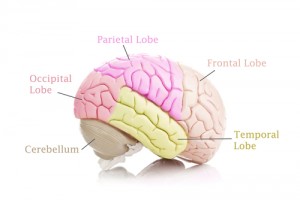The Visual Side of Neuromarketing Research
Neuromarketing is taking a hold now more than ever with savvy marketing professionals. The practice is also being applied with success for a wide range of products
 and services. Neuromarketing is an idea that comes from research in the cognitive process when combined with marketing. At its most fundamental level, neuromarketing research is finding that human beings have a preference for the simple versus the complex when it comes to absorbing new concepts and information. Here we talk a little about neuromarketing’s findings that visual messages that are easier to process mentally are more attractive to consumers than those that require more energy to cognitively digest.
and services. Neuromarketing is an idea that comes from research in the cognitive process when combined with marketing. At its most fundamental level, neuromarketing research is finding that human beings have a preference for the simple versus the complex when it comes to absorbing new concepts and information. Here we talk a little about neuromarketing’s findings that visual messages that are easier to process mentally are more attractive to consumers than those that require more energy to cognitively digest.
According to neuromarketing principles, there is not only a practical but also a cognitive reason why marketers should keep all information—from advertisements to instructions for the assembly of a product—within a simple and clear format. Consumers remember and pay attention to simplicity more—we get overwhelmed easier than we’d think. This rule holds true not only for written or audio words—it is equally important in the visual representation of a message as well. For instance, a message can be written in plain language, but it must also be presented in a font that is easy on the eye.
Examples of this practice occurring in written language can include products that have easy-to-pronounce and easy-to-remember names. Simple-to-read letters are also more likely to be read in advertisements than fancier letters. Additionally, pictures that are simple to comprehend are often more attractive than those with a wider variety of shapes, colors, and ideas.
At the research end, a study from the University of British Columbia found that when photos of a product depicting a change over time were shown to study participants, how much an individual liked the photo or product was directly related to the physical direction in which time unfolded in the image. This study demonstrated that the participants had a much stronger preference for products depicting images of time changing from left to right (like before on the left and after on the right). However, it was also found that there was a strong correlation between this preference and people whose written language goes from left to right. For those who read from right to left, this image preference of change over time was in the same direction in which they read their language—right to left!
Other neuromarketing studies have pointed to more insights about visual placement of objects and concepts in how images influence viewer preference. In one, it was found that the closer two images were physically, the more strongly connected viewers considered the images to be.
Now, we all have preferences with regards to what is more appealing to us visually, yet some of these preferences are pretty implicit. Neuromarketing research is needed now more than ever to help marketers better understand the general truths of our visual preferences. It seems we can now harness the similarities in how the human brain has evolved to positively impact advertising campaigns.

Tell us how we can help you
Cascade Strategies can serve your market research needs from the most straightforward to the most sophisticated project. Don’t hesitate to contact us to tell us about your next project, or your overall research needs in general. You can call (425) 677-7430 and ask for Jerry, Nestor, or Ernie. Or send us an email at info@cascadestrategies.com. We’ll get back to you quickly!
subscribe

